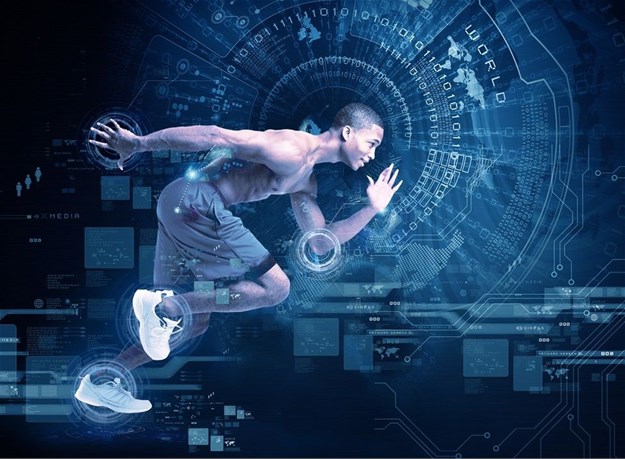In the current IAAF World Athletics Championships in Doha, Qatar, but also generally in sports, a lot of athletes are using the latest technologies to boost their performance, either for coaching purposes or self-motivation. This gave me to think of what applications exist (next to Fitbits) that athletes and sports hobbyists can use to improve their performance. Artificial Intelligence and Data Analytics play a big role here. AI can process big amounts of statistical data with almost no effort, it can even identify factors that improve sports performance that would be impossible to detect for humans.
Let’s take Tennis as an example. “Tennis In/Out” is a 199$ pocket-size device that detects the speed and placement of a shot via AI technologies. Via HD recordings you can learn from your mistakes and stop endless controversies with your opponent. A light and sound begin to signal when the ball is out. The device can also analyse the shot placements to improve personal performance. This device is currently a novel application for hobbyists and therefore at the moment rather expensive for personal use. (Gentil, 2019)
“PIQ” is another application that can – with the help of information – improve your game. At the moment it is tailored to specific sports: Boxing, Kiteboarding, Skiing, Tennis, and Golf. The Device PIQ Robot is a small powerful Nano-computer that can analyse and capture thousands of data points in no time. With the help of a special machine learning platform, it then displays the exact performance of your game. In Tennis, for example, it can track your speed, spin, stroke type, your shot by shot performance and your progress. (PIQ, 2019)
The third example can extend your sports experience as it can reduce injury rates by 75%. “Zone7” uses data and analytics to identify potential for injuries with athletes. Currently, this application is used for professional athletes rather than hobbyists. However, the technology is seen as a “real game changer” as it has the potential to “change the landscape for sports forever”. By using pattern recognition based on past performances and medical history of the user, Zone 7 can determine the best strategy for players, so they do not get injured. (Zone 7, 2019)
These three applications are examples of how information can be used to make your game better as your experience is enabled by data and algorithms. It can make sports more fun to compete with your friends and yourself. I think that AI in sports – in professional sports as well as hobby sports – will get more attention in the upcoming years. Such applications and its underlying technologies can specifically tell you where your winning factors are – they can be so insightful that it is almost cheating.
Bibliography:
Cambridge-design.com. (2019). How AI can help improve sports performance | CDP Blog. [online] Available at: https://www.cambridge-design.com/news-and-articles/blog/how-ai-can-help-improve-sports-performance [Accessed 15 Oct. 2019].
Gentil, G. (2019). In/Out: The Portable Ready-to-Use Line Call Device. [online] Inout.tennis. Available at: https://inout.tennis/en/index.htm [Accessed 15 Oct. 2019].
Piq.com. (2019). PIQ | Sport sensors that talk your language. [online] Available at: https://piq.com/ [Accessed 15 Oct. 2019].
Zone7. (2019). Predict Athlete Injuries – Zone7. [online] Available at: http://zone7.ai/# [Accessed 15 Oct. 2019].


